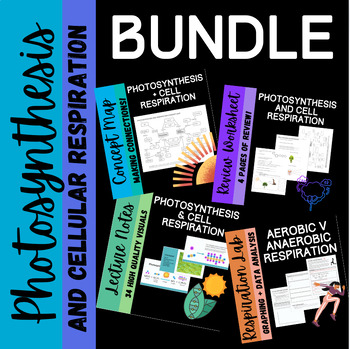Photosynthesis and Respiration Bundle
- Zip
- Easel Activity

What educators are saying
Products in this Bundle (12)
showing 1-5 of 12 products
Bonus
Description
This EDITABLE bundle includes everything you need for a unit on Photosynthesis and Cellular respiration: bellringers, readings, lecture notes, a lab, activities, worksheets, task cards, homework and an exam. All of the materials included in this bundle are sold separately on TpT. Click on the links below to see detailed descriptions of each product included. Enjoy!
HS-LS2-5. Develop a model to illustrate the role of photosynthesis and cellular respiration in the cycling of carbon among the biosphere, atmosphere, hydrosphere, and geosphere.
HS-LS1-5 Use a model to illustrate how photosynthesis transforms light energy into stored chemical energy.
HS-LS1-7 Use a model to illustrate that cellular respiration is a chemical process whereby the bonds of food molecules and oxygen molecules are broken and the bonds in new compounds are formed resulting in a net transfer of energy.
**NOTE: Does not include rote memorization of calvin cycle, kreb's cycle, Electron transport chain, etc., in accordance with NGSS standards**





